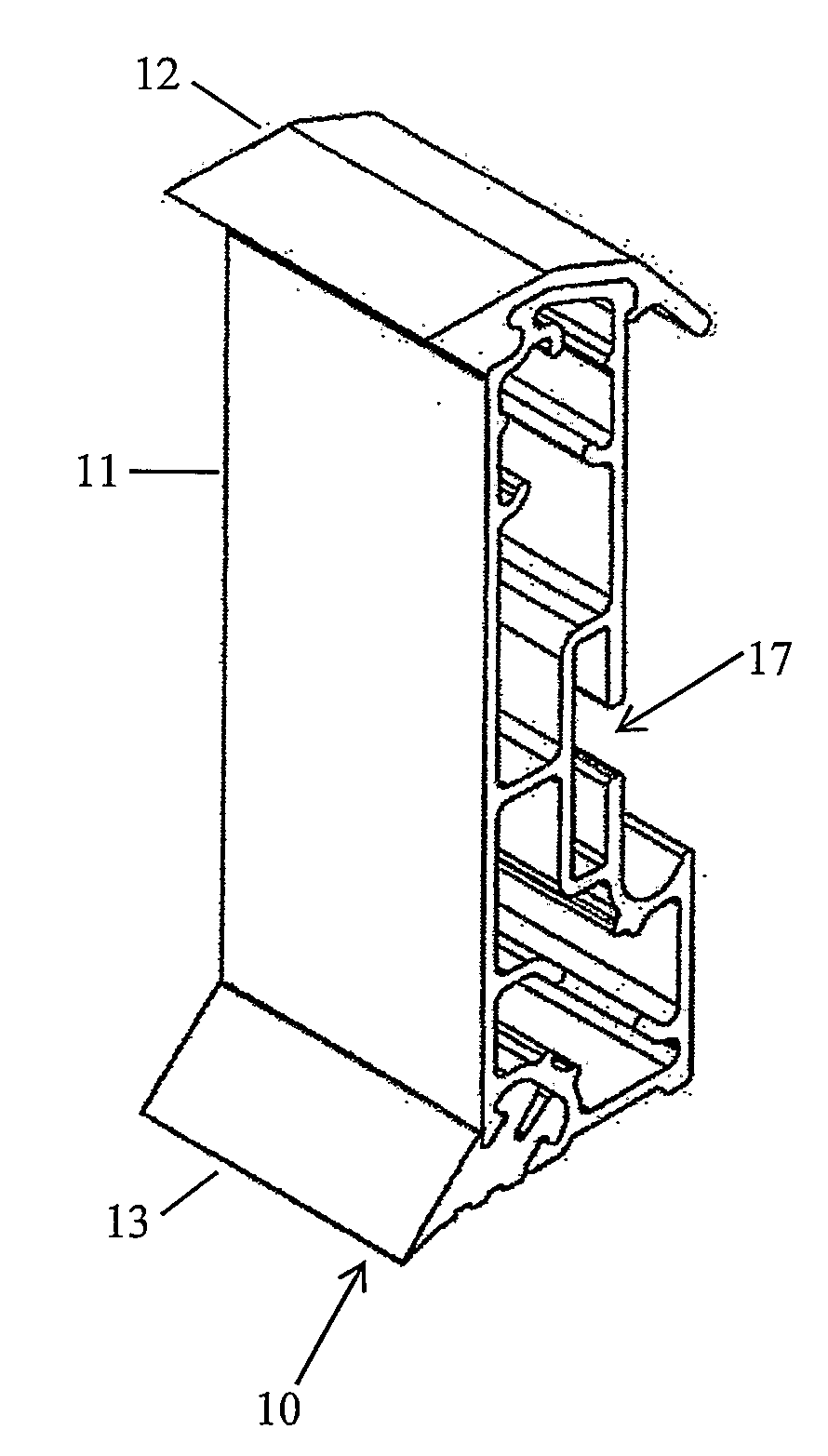Concrete Sideform System
a sideform system and concrete technology, applied in the direction of moulds, mould fastening means, shaping building parts, etc., can solve the problems of inability to produce crisp sharp edges, bulky extrusion, and general bulkiness, and achieve simple, easy and cost-effective changes, and improve surface finish.
- Summary
- Abstract
- Description
- Claims
- Application Information
AI Technical Summary
Benefits of technology
Problems solved by technology
Method used
Image
Examples
Embodiment Construction
[0047]Referring first to FIG. 1, sideform 10 is a mono-sided composite sideform for factory casting; it cannot be used upside down. The sideform is comprised of an extruded aluminum (or plastics) frame 11, a capping insert 12 made from extruded from alloy or polymer, and a base edge insert 13 made from plastics or rubber. Formations 14 and 15 in the top and bottom of frame 11 cooperate with formations on the inserts 12 and 13 to releasably connect them together. When the inserts are attached to the frame they create a shaped edge to the poured concrete panel; the edge has a vertical section where it meets the frame and corners chamfered at 45° along its upper and lower edges.
[0048]A ‘T’-shaped slot 17 in the back of the sideform is provided for securing it to the bed. This formations allow a bolt or uni-bolt to be inserted, or alternatively a plate with threaded lugs. The sideform is then secured to a factory casting bed using magnets, or to a panel cast underneath with steel angles...
PUM
| Property | Measurement | Unit |
|---|---|---|
| thicknesses | aaaaa | aaaaa |
| thicknesses | aaaaa | aaaaa |
| thicknesses | aaaaa | aaaaa |
Abstract
Description
Claims
Application Information
 Login to View More
Login to View More - R&D
- Intellectual Property
- Life Sciences
- Materials
- Tech Scout
- Unparalleled Data Quality
- Higher Quality Content
- 60% Fewer Hallucinations
Browse by: Latest US Patents, China's latest patents, Technical Efficacy Thesaurus, Application Domain, Technology Topic, Popular Technical Reports.
© 2025 PatSnap. All rights reserved.Legal|Privacy policy|Modern Slavery Act Transparency Statement|Sitemap|About US| Contact US: help@patsnap.com



